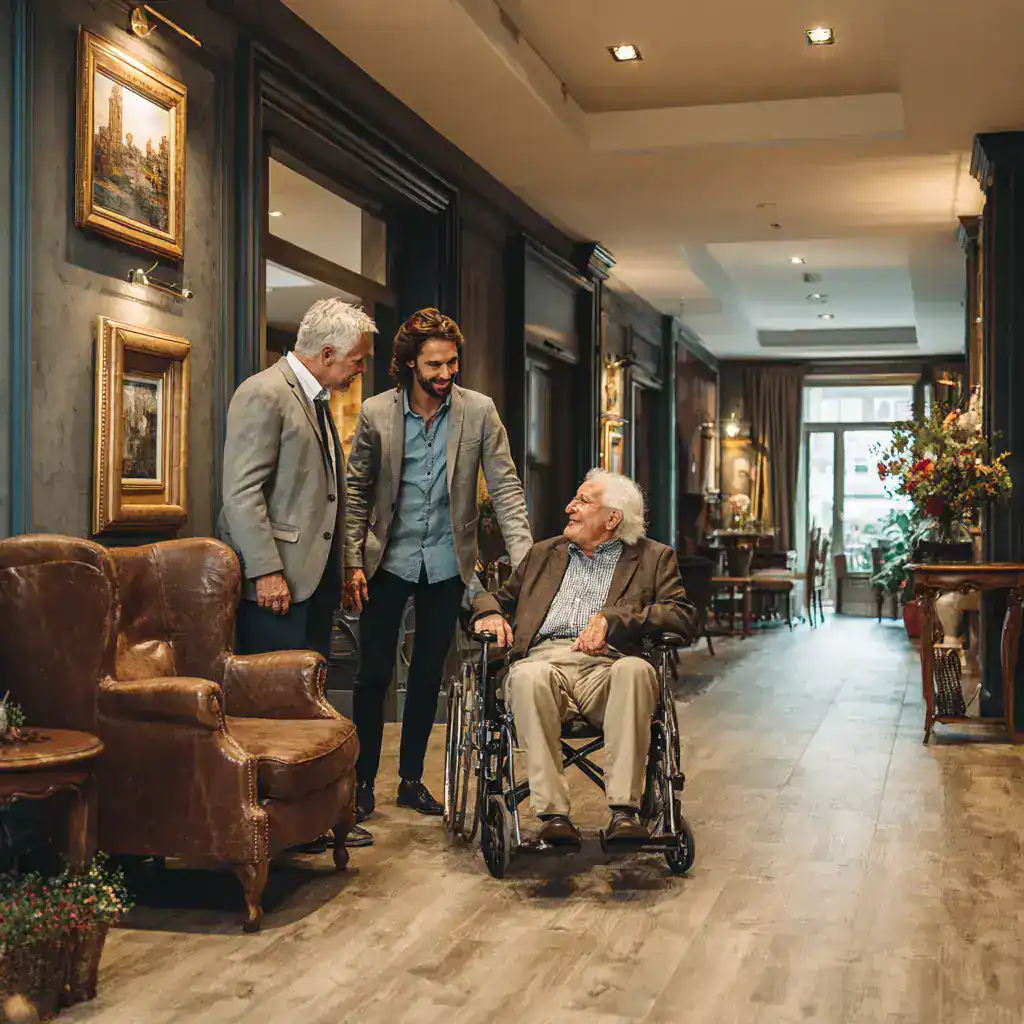9 Tips to Improve the Resident Experience at Your RCFE
Improving the day-to-day life of residents is the heart of good RCFE practice. Whether you are exploring how to start a residential assisted living home or looking to upgrade an established community, resident experience should guide every operational choice—from staff training and meal planning to communication and technology.
This article shares practical, research-informed ideas on how to improve the resident experience at an RCFE, which leaders can put into place without jargon or gimmicks. The aim is simple: help residents feel safe, known, and engaged while supporting families and staff.
First, a note on language: “resident experience” refers to how a person feels about living in your community—safety, dignity, comfort, connection, and the ease of receiving care. Improving this is not one big project; it is a steady set of habits and policies. The nine tips below reflect RCFE resident care best practices and are designed as RCFE administrator resident care tips you can apply right away.
Tip 1 — Start With Person-Centered Daily Routines
Resident experience starts with the basics of everyday life. Ask each resident about preferred wake times, bathing schedules, hobbies, and meal likes/dislikes. Build these preferences into care plans and shift huddles, and revisit them monthly.
Even small changes—like honoring a later breakfast or setting aside a quiet room for morning reading—signal respect and improve mood and participation. This also reduces agitation and the need for redirection because the day better fits the person.
Tip 2 — Invest in Staff Preparation and Mentorship
Residents notice when teams are confident and coordinated. Provide structured onboarding, shadowing time with experienced caregivers, and short, focused in-service sessions that practice real scenarios (e.g., safe transfers, de-escalation, dementia-friendly communication).
For leaders, formal preparation matters; consider enrolling managers in RCFE administrator certification training to strengthen regulatory knowledge, supervision skills, and quality-improvement tools. Pair each new caregiver with a mentor for the first 90 days and check in weekly on what is working and where support is needed.
Tip 3 — Make Family Communication Predictable and Two-Way
Uncertainty is stressful for families. Set a standing rhythm, such as a brief weekly update call or secure message, so relatives do not have to chase information.
Offer a single point of contact for routine questions and an on-call pathway for urgent issues. Invite families to share what “a good day” looks like for their loved one and put those notes into the care plan. If you want a quick reminder of what relatives value most, understand the things families look for in an RCFE, and use that lens to audit your own practices.
Tip 4 — Focus Activities on Meaning, Not Just Busywork
Quality activities feel purposeful. Blend small-group options (e.g., gardening, music circles, current-events chats) with one-to-one engagements for residents who prefer quieter settings. Track what gets repeat attendance and retire what does not.
Offer roles—plant watering, mail sorting, welcoming new residents—so people can contribute, not just consume. A simple “What are you looking forward to this week?” question helps staff tailor the calendar to real interests.
Tip 5 — Elevate Dining Into a Daily Highlight
Dining is social, sensory, and deeply personal. Create choice within structure: two main options plus an always-available menu, familiar comfort foods, and cultural favorites. Train servers to use residents’ names, make eye contact, and confirm preferences at the table.
Ask for feedback quarterly and adjust seasoning, textures, or serving times. A calm dining room with steady pacing reduces frustration and promotes nutrition, which supports energy, wound healing, and overall well-being.
Tip 6 — Standardize Care Handoffs and Morning Huddles
Missed details erode trust. Use a brief, consistent handoff tool at every shift change (e.g., top three care priorities, recent mood/behavior notes, new orders, family updates). Add a 10-minute morning huddle with nursing and activities to align on the day’s plan: who needs extra encouragement to join an event, who is due for a shower, and who has a medical appointment. These lightweight routines keep teams synchronized and support residents better.
Tip 7 — Treat Safety and Dignity as the Same Goal
Safety protocols should never strip away autonomy. Explain the “why” behind interventions, such as bed alarms, wander-risk bracelets, or adaptive utensils, and involve residents in choices whenever possible.
Balance fall prevention with the right to move freely by offering supervised walking routes, seated exercise classes, and accessible handrails. When residents feel respected, they are more likely to accept safety measures and stay engaged.
Tip 8 — Use Technology to Support, Not Replace, Human Care
Technology can amplify care when used thoughtfully. Secure messaging, digital care plans, and real-time incident logs help teams respond faster and reduce errors. Wearable alerts or passive monitoring may detect changes early, but they should complement (not substitute) observant, relational caregiving. Review current RCFE industry trends annually to decide which tools align with your resident mix and budget, and pilot before purchasing at scale.
Tip 9 — Hire and Reward for the Right Behaviors
Resident experience rises or falls with frontline interactions. Hire for warmth, patience, and curiosity. You can teach tasks, but you cannot teach someone to care. Reinforce desired behaviors: greeting residents by name, knocking before entering, and offering choices through praise, spot bonuses, and growth paths.
For a quick touchstone on culture fit, share the best traits that assisted living facilities and caregivers share with your hiring team and build interview questions around those qualities.
Quick, High-Impact Actions You Can Take This Quarter:
- Launch a weekly “good news” note highlighting small wins and upcoming events to families.
- Start five-minute “get to know me” refreshers using resident profile cards during shift huddles.
- Add a feedback box and a monthly resident council agenda item titled “one thing to try.”
- Offer two flexible dining slots for dinner to reduce congestion and wait times.
- Shadow a caregiver for one hour weekly to spot friction points you can remove.
Measure What Matters (So You Can Improve It):
- Resident satisfaction snapshots (one-question pulse checks after meals or activities)
- Activity participation rates by resident and by program type
- Unplanned transfer rates and reasons (to spot preventable patterns)
- Call-light response times and completion rates
- Dining satisfaction (taste, temperature, and choice) from short comment cards
- Family communication timeliness (percent of updates sent on schedule)
Align Policies With Resident Experience Goals
Policy should support, not obstruct, good care. If your rules create unnecessary waits, repeated paperwork, or rigid schedules, residents feel it. Map a resident’s journey—from admission inquiry to the first 72 hours—and remove steps that do not add value.
When in doubt, ask: Does this policy help a resident feel safe, known, or engaged? Do regulations mandate it? If not, redesign it.
Keep Learning and Adapting
Resident needs evolve. Set an annual education plan for your leadership team, and include at least one external benchmark review. If you are new to leadership or building your first program, structured coursework can speed up learning. Likewise, if you are researching how to start an RCFE, do a gap analysis against state requirements and invest in training before opening. Continuous learning protects residents and strengthens your reputation.
***
Improving RCFE resident experience is not about one grand initiative but about consistent, person-centered habits across your entire operation. Start with daily routines that honor preferences, train and mentor your staff, keep family communication predictable, and measure a few outcomes that truly reflect quality of life.
Build on what residents enjoy, simplify what frustrates them, and reward staff behaviors that show warmth and respect. With steady effort and a culture that values dignity and purpose, your community will feel more like home. Staying aligned with RCFE resident care best practices will help your team consistently deliver dependable, compassionate care.



